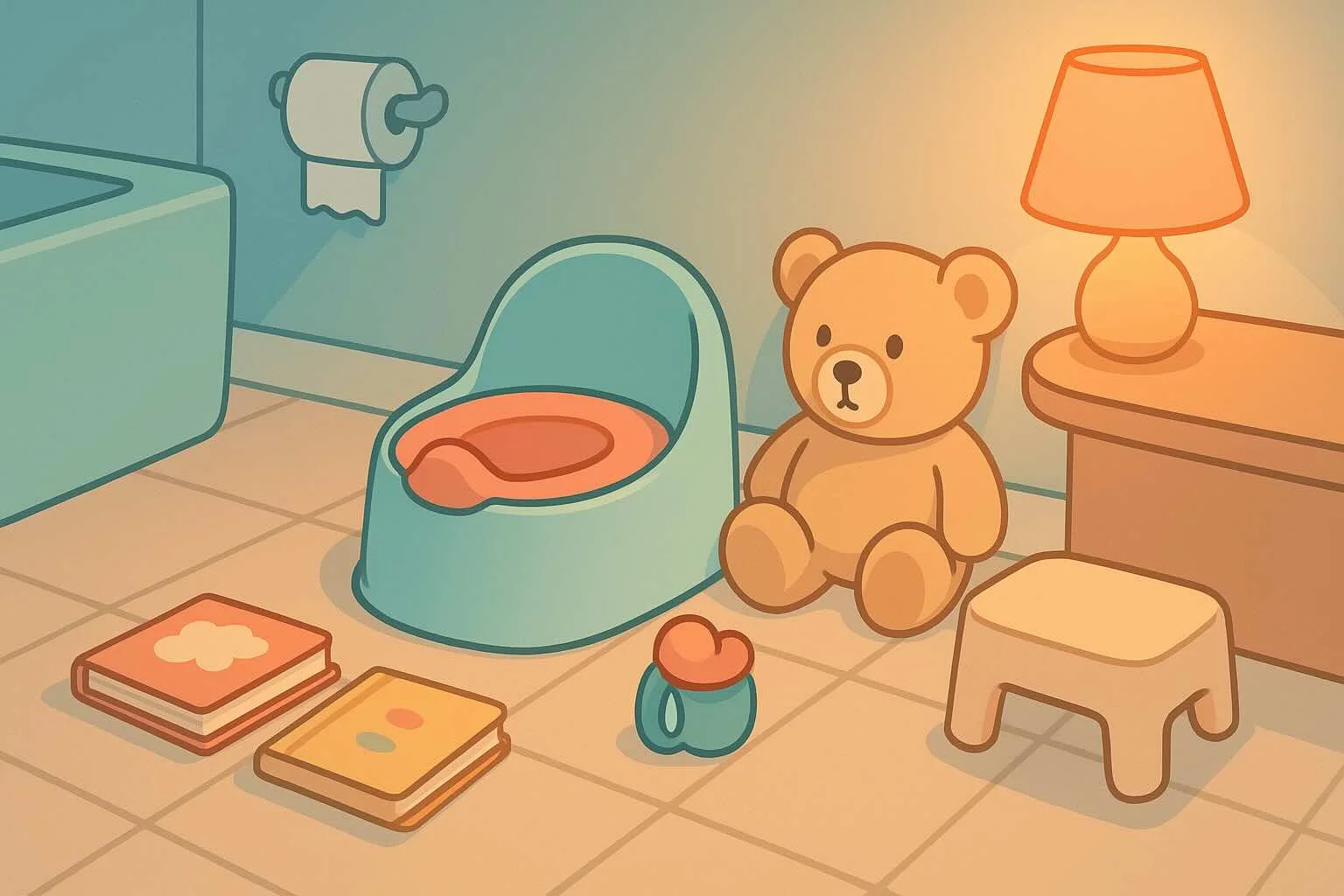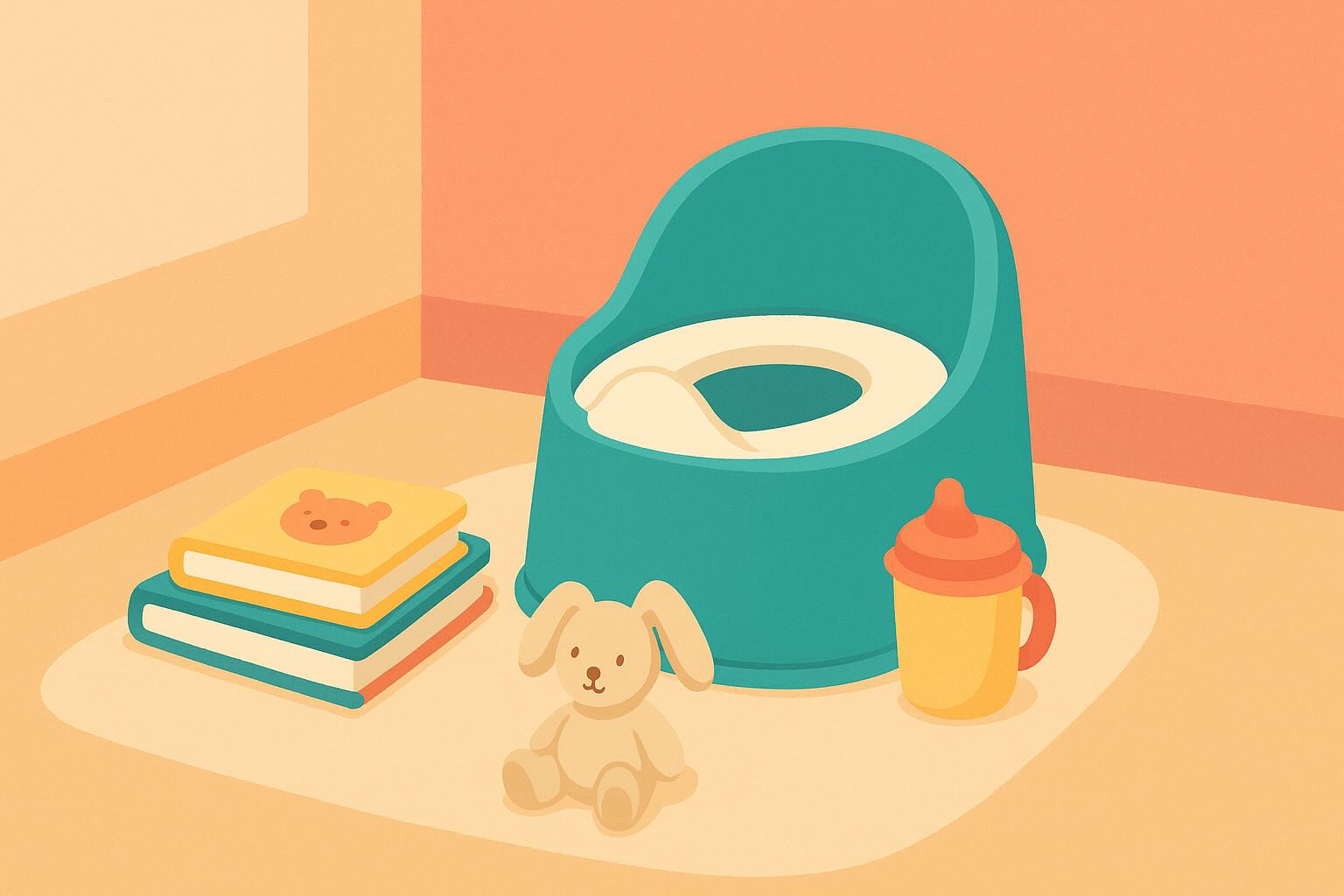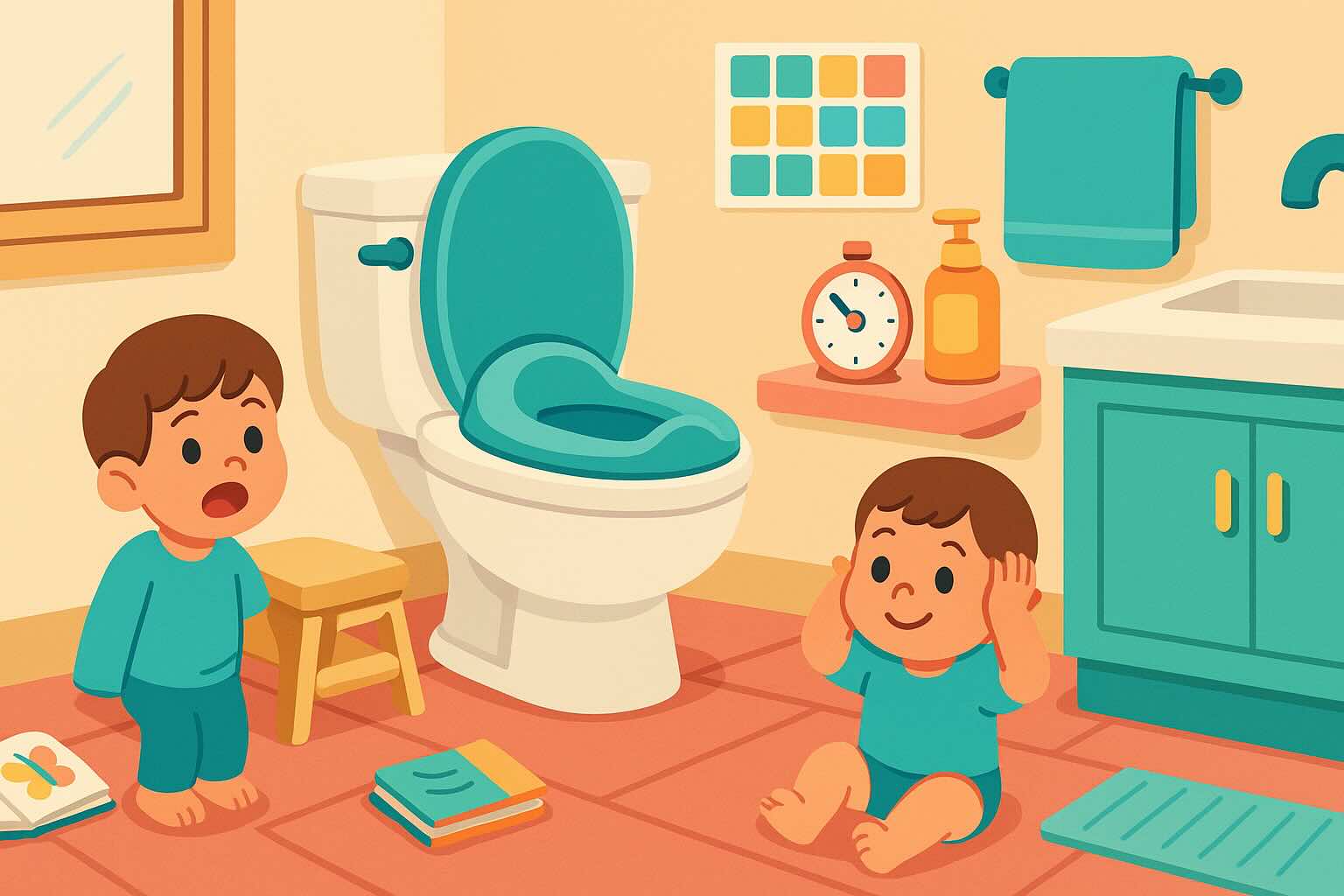Toddler Afraid to Poop on Potty: Understanding and Resolving Poop Anxiety
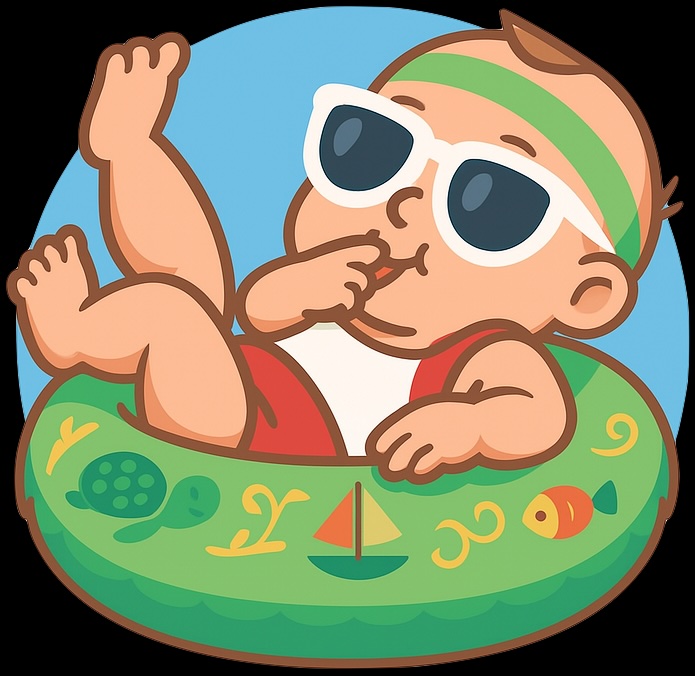
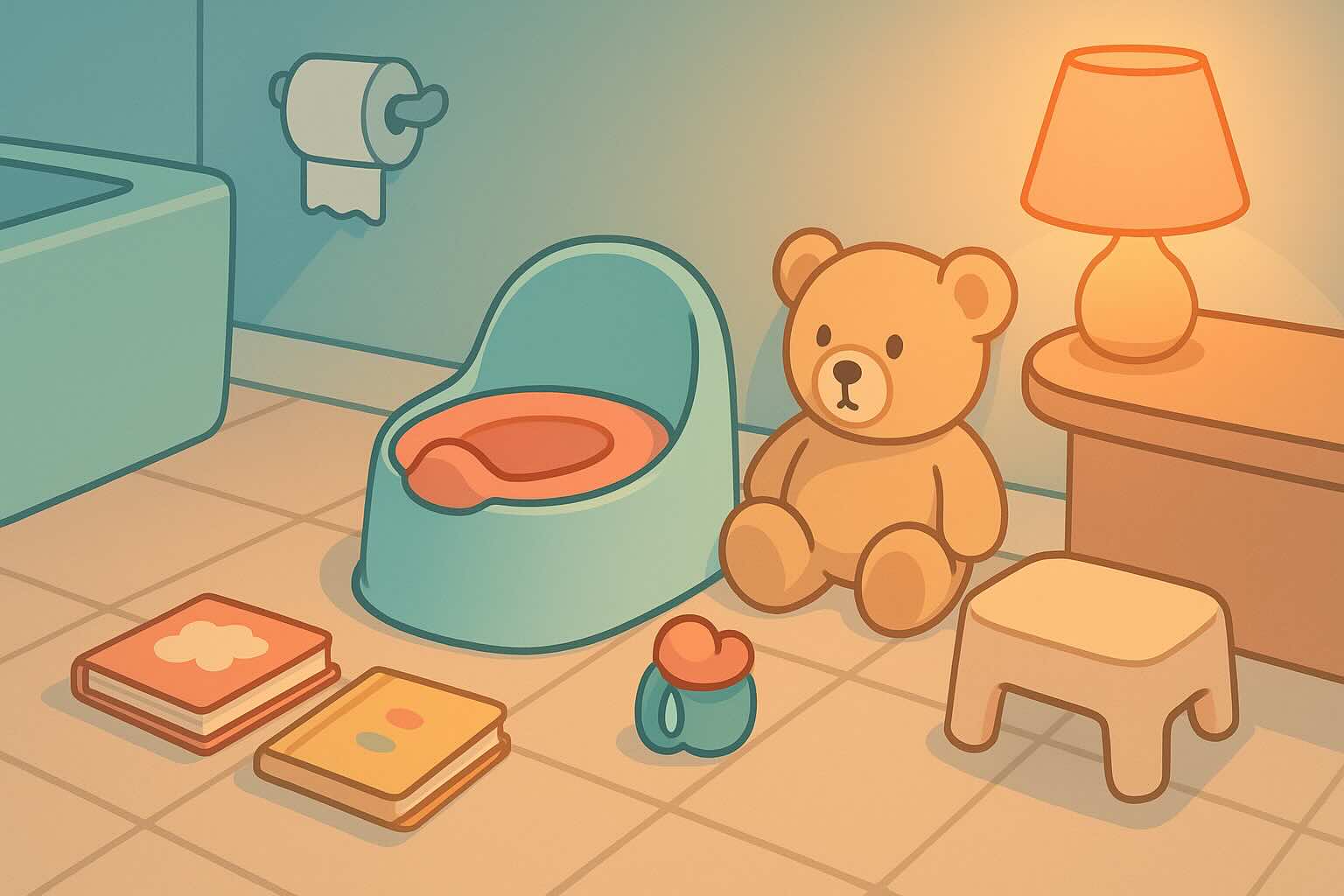
"My daughter will pee on the potty with zero issues. But poop? She holds it for three days, then asks for a diaper, goes and hides in the corner, and screams if I suggest trying the potty. I don't understand—she knows how to use the potty! Why is poop so different?"
Welcome to one of the most common and frustrating potty training challenges: poop anxiety.
Here's what's happening: Your child isn't being stubborn or difficult. They're experiencing genuine fear and anxiety about pooping—and that fear is powerful enough to override physical discomfort, your encouragement, and logical reasoning.
Poop anxiety is not a behavioral problem. It's an anxiety problem (with often-overlapping medical components) that requires a completely different approach than pee training.
The good news? This is solvable. With the right combination of anxiety-reduction strategies and (often) medical support, the vast majority of children overcome poop anxiety within 3-6 months.
⚠️ Medical Disclaimer: This article provides educational information about poop anxiety and withholding, not medical advice. Every child's situation is unique. If you have concerns about your child's bowel habits, constipation, health, or development, please consult your pediatrician for personalized medical guidance.
In this guide, you'll learn:
- Why poop anxiety happens (the psychology and physiology)
- The constipation-withholding cycle and how to break it
- 6 evidence-based strategies for reducing poop fear
- When and how to use stool softeners
- The "wherever you're comfortable" approach that removes power struggles
- Timeline expectations and when to seek specialist support
Let's start by understanding what's really going on in your child's mind and body.
Understanding Poop Anxiety: Why Poop Feels Different Than Pee
The question parents ask: "If they can pee on the potty, why can't they just poop there too?"
The answer: Pooping involves completely different psychological and physical experiences than peeing.
The Psychological Factors
1. Loss and Letting Go
To adults, poop is waste. To toddlers developing a sense of self and body, poop feels like part of them—something they created, something that was inside their body.
"Letting it go" into a potty or toilet can feel like:
- Losing part of themselves
- Something being taken away
- Lack of control over what happens to their "creation"
Why pee is different: Pee comes out quickly, is liquid (less "substantial"), and doesn't carry the same sense of "this is mine."
2. Control and Autonomy
Toddlers have very little control in their lives. Adults decide:
- What they eat, when they eat
- What they wear
- Where they go
- When they sleep
But bodily functions? That's one thing they CAN control absolutely.
Holding poop becomes: "This is MINE. I decide when it comes out. You can't make me."
For more on toddler autonomy development, see our 3-year-old potty training guide.
3. Fear and Past Pain
If a child has EVER experienced:
- Painful bowel movement (from constipation)
- Anal fissure (tear from hard stool)
- Scary sensation of large poop
- Falling in or fear of falling in toilet
...their brain creates an association: Pooping = Danger/Pain.
The location (potty vs. diaper) becomes associated with that fear.
Why pee is different: Peeing rarely hurts (unless UTI). It's not associated with past trauma.
4. Sensory Overwhelm
The physical sensations of pooping include:
- Pressure in rectum
- Movement through bowels
- Letting go/bearing down
- Something substantial leaving the body
- Plopping sound (scary for some kids!)
- Smell (intense for sensitive kids)
For sensory-sensitive children, these sensations can be overwhelming and frightening.
Why pee is different: Less intense sensations, faster process, less overwhelming.
The Medical Factor: The Constipation-Withholding Cycle
Here's where psychology meets physiology in a vicious cycle:
The cycle:
- Child withholds poop (due to fear, control, or pain avoidance)
- Stool stays in colon longer, absorbing more water
- Poop becomes harder and larger
- Eventually, child must poop (can't hold forever)
- Pooping is very painful (hard, large stool stretches rectum, may cause fissures)
- Fear increases ("Pooping hurts!")
- Child withholds even more next time
This cycle gets worse over time without intervention.
Eventually, you may see:
- Child holding for 4-7+ days
- Extremely large, hard stools
- Blood on toilet paper or in stool (from fissures)
- "Overflow" accidents (liquid stool leaking around hard impacted stool)
- Loss of bowel sensation (stretched rectum loses sensitivity)
Breaking this cycle requires medical intervention (stool softeners) PLUS anxiety strategies. You can't behavior-modification your way out of a constipation cycle.
The 6 Strategies That Actually Work for Poop Anxiety
These strategies come from evidence-based approaches and align with the Good Inside philosophy of respecting body autonomy while supporting skill development.
Strategy 1: Body Sovereignty - "You're In Charge of Your Body"
The principle: Genuinely transfer control over pooping back to your child.
What to say:
"Your body makes poop. Your body knows when it needs to come out. YOU get to decide where to poop—diaper, pull-up, potty, toilet. I trust you to know what feels safe for your body."
What this does:
- Removes power struggle
- Reduces anxiety (no one is forcing them)
- Respects their developmental need for autonomy
- Makes it their choice (intrinsic motivation)
What it does NOT mean:
- Letting them withhold for 7 days (medical intervention needed)
- Never mentioning poop
- Having zero boundaries
Boundaries within autonomy:
"Your body needs to poop regularly to stay healthy. You can choose WHERE (diaper or potty), but pooping needs to happen."
Strategy 2: Normalize Poop - Make It Not Scary
The approach: Talk about poop matter-of-factly, without judgment or pressure.
What to do:
- Read age-appropriate poop books (funny, educational)
- Talk about how ALL bodies make poop (people, animals)
- Explain what poop IS: "Your body takes what it needs from food, and poop is what's left over"
- Normalize different poop experiences: "Sometimes poop is easy. Sometimes it's harder. That's normal."
What to avoid:
- "Poop is yucky/gross/disgusting" (creates shame)
- "Big kids don't poop in diapers" (comparison/pressure)
- Excessive focus on poop (creates anxiety)
Balance: Poop is a normal, no-big-deal body function. Not shameful, not terrifying, not exciting—just normal.
Strategy 3: Process Praise - Celebrate Pooping, Not Location
Traditional approach (creates pressure):
- "Good job pooping on the potty!" (ties worth to location)
- "I'm so proud of you!" (seeking parental approval)
- Rewards/stickers for potty poop (external motivation)
Body sovereignty approach (reduces pressure):
- "Your body pooped! That's healthy." (celebrates body function)
- "You listened to your body's signals." (internal awareness)
- "Pooping feels better when it comes out, doesn't it?" (acknowledges their experience)
The difference: Location-neutral language. Poop in diaper gets the same neutral acknowledgment as poop on potty.
Why this works: Removes the "performance" aspect and focuses on body health rather than parent-pleasing.
Strategy 4: "Wherever You're Comfortable" Approach
The strategy: Genuinely make diapers/pull-ups available for pooping, even if child is using potty for pee.
What to say:
"I notice you like to poop in a diaper. That's okay! Your body needs to poop, and diaper feels safe to you right now. When you're ready to try the potty for poop, you can. Until then, diapers are here."
When they ask for diaper to poop:
- Give it immediately: "Of course. Here you go."
- No disappointment, no "wouldn't you rather try potty?"
- After they poop: "You pooped! Your body feels better now."
- Help them clean up collaboratively
Gradual transitions (when/if child initiates):
- "Want to wear diaper while sitting ON the potty?" (bridging)
- "Want to try potty with diaper inside it?" (safety object present)
- Eventually: "Want to try without diaper?" (their choice)
Timeline: Most children naturally choose potty for poop 2-6 months after anxiety resolves—when it's their idea.
Strategy 5: Medical Intervention - Break the Constipation Cycle
When to use stool softeners:
- Child withholds for 2+ days regularly
- Stools are hard, large, or painful
- Visible straining or distress during pooping
- History of painful bowel movements
How to use them (under pediatric guidance):
- Miralax/PEG 3350: Most commonly recommended, pulls water into stool
- Start low, titrate up: Begin with small dose, increase until achieving one soft, easy poop per day
- Be consistent: Daily dosing, not as-needed
- Be patient: Takes 3-7 days to see full effect
- Plan for months, not weeks: Continue for 2-6 months even after anxiety improves
Dietary support (alongside, not instead of, softeners):
- Increase water: Extra hydration helps soften stool
- Add fiber gradually: Fruits (prunes, pears, berries), vegetables, whole grains
- Avoid binding foods during crisis: Cheese, bananas, white bread, rice (reintroduce later)
- Probiotics: May help some children with gut motility
Why medical intervention matters: You cannot resolve poop anxiety if pooping is painful. Pain reinforces fear. Soft, painless poop breaks the fear cycle.
Strategy 6: Create Safe Space for Pooping
Environmental supports:
- Privacy if they want it: Some kids need to poop alone
- Familiar setting: Let them poop in their "safe spot" initially (even if that's standing in corner with diaper)
- Comfort items: Favorite book, stuffed animal, music
- Stable seat: Fear of falling in is real—small potty or toilet seat reducer with step stool
- No audience: Siblings, guests should leave child alone
Routine and predictability:
- Same time of day: After breakfast is ideal (natural gastrocolic reflex)
- Unhurried: Don't rush, don't set timers
- Body signals: "I notice you're doing your potty dance. Would you like a diaper?"
What NOT to do:
- Force sitting on potty
- Hold them on toilet
- Bribe or threaten
- Express frustration or disappointment
- Compare to other children
For more on managing anxiety in children, see our fears and anxiety guide.
Breaking the Cycle: Step-by-Step Action Plan
If your child is currently in the constipation-withholding cycle, here's your 6-12 week plan:
Weeks 1-2: Medical Foundation
Action items:
- Consult pediatrician, get recommendation for stool softener dosage
- Start stool softener daily (consistency is key)
- Increase water intake
- Add fiber-rich foods gradually
- Make diapers/pull-ups easily available with zero pressure
What to say to child:
"We're going to help your body make soft, easy poops. Your doctor gave us medicine that pulls water into poop so it doesn't hurt. You can poop in diaper or potty—wherever feels safe."
Weeks 3-4: Establish Regular Pooping
Goals:
- One poop per day (even if in diaper)
- Soft, easy-to-pass consistency
- Child no longer withholding
Monitor:
- Stool consistency (should be soft like peanut butter)
- Frequency (daily is ideal)
- Pain/distress during pooping
Adjust:
- Increase stool softener if still hard/infrequent
- Decrease if too soft/frequent
What to celebrate (neutrally):
"Your body pooped today! I bet that feels better."
Weeks 5-8: Reduce Anxiety, Maintain Medical Support
Continue:
- Daily stool softener (even though poops are easier now!)
- Fiber and water
- "Wherever you're comfortable" approach
Add anxiety-reduction strategies:
- Read poop books
- Talk about poop matter-of-factly
- Process praise (celebrate body function, not location)
- Offer choices: "Diaper or potty—you decide"
What you might see:
- Child more relaxed about pooping
- Asking for diaper to poop (this is GOOD—they're not withholding!)
- Possibly initiating trying potty (if so, celebrate calmly but don't push)
Weeks 9-12+: Gradual Potty Introduction (If Child Initiates)
Wait for these signals from your child:
- "Can I try the potty?"
- Sitting on potty voluntarily
- Talking about pooping on potty
- Observing others and expressing interest
If they show interest:
- "Would you like to try?"
- Offer bridging steps (diaper on potty, diaper in potty, etc.)
- Stay completely neutral about outcome
- If they try and can't/won't, that's okay: "You tried! Your body will poop when it's ready."
If they don't show interest yet:
- That's okay. Continue medical support, continue "wherever comfortable" approach
- They WILL choose potty when ready—trust the timeline
- Some children take 6-12 months
Timeline Expectations: How Long Does Poop Training Take?
The question every parent asks: "How long will we be dealing with this?"
The honest answer: Longer than pee training, and highly variable based on severity and approach.
Typical Timelines by Severity
Mild poop anxiety (child occasionally poops on potty, prefers diaper):
- With supportive approach: 1-3 months to consistent potty use
- With pressure approach: 6-12+ months of power struggles
Moderate poop anxiety (consistent refusal, some withholding):
- With medical + anxiety support: 3-6 months
- Without medical support: 6-12+ months, often worsening
Severe anxiety with constipation cycle (regular withholding 3+ days, painful stools):
- With comprehensive approach (stool softeners + anxiety strategies + time): 6-12 months
- Without proper intervention: Can persist for years, may develop into encopresis
Factors That Speed Resolution
- Early medical intervention (stool softeners prevent pain cycle)
- Removing all pressure (genuine "wherever comfortable" approach)
- Consistency across caregivers (everyone using same approach)
- Addressing underlying anxiety (therapy if needed for severe fear)
- Parent emotional regulation (staying calm, patient, non-judgmental)
Factors That Extend Timeline
- Pressure and punishment (increases anxiety, deepens resistance)
- Delayed medical treatment (pain cycle continues)
- Inconsistent approach (different rules at home/daycare/grandparents)
- Parent frustration visible to child (increases shame and anxiety)
- Stopping stool softeners too soon (constipation returns, resets progress)
When to Seek Specialist Support
Consult pediatric gastroenterologist if:
- Severe withholding (4+ days regularly despite stool softeners)
- Encopresis (chronic soiling, overflow incontinence)
- Extreme pain (screaming, bleeding, visible anal fissures)
- No progress (3+ months of medical treatment + anxiety support with no improvement)
- Loss of bowel sensation (child doesn't notice when poop comes out)
- Abdominal distension (hard, swollen belly from impaction)
Consult child psychologist/therapist if:
- Extreme fear response (panic, meltdowns at mention of poop)
- Trauma history (abuse, medical trauma)
- Generalized anxiety (poop anxiety is one of many anxiety symptoms)
- OCD-like behaviors (compulsive wiping, excessive fear of contamination)
- No improvement (6+ months of supportive approach with worsening anxiety)
Don't wait for it to resolve on its own if it's severe. Early intervention prevents long-term complications.
The Bottom Line on Poop Anxiety
Poop anxiety is not:
- Your child being stubborn
- Evidence that you failed at potty training
- A power struggle you need to "win"
- Something you can logic or bribe away
Poop anxiety IS:
- A genuine fear response rooted in psychology and often physiology
- Treatable with the right combination of medical support and anxiety reduction
- Solvable when you remove pressure and respect body autonomy
- Temporary—the vast majority of children overcome it within 6-12 months with appropriate support
Your job isn't to make your child poop on the potty.
Your job is to:
- Break the medical cycle (soft, painless poops with stool softeners)
- Reduce the anxiety (body sovereignty, process praise, safety)
- Trust their timeline (they will choose the potty when ready)
- Stay regulated and compassionate (your calm is their safety)
When you do this, here's what typically happens:
Months 1-3: Child relaxes about pooping, asks for diaper comfortably, poops regularly without pain
Months 4-6: Child becomes curious about potty for poop, may try with supports (diaper on potty, etc.)
Months 6-12: Child transitions to potty for poop when it's their idea, their choice, their accomplishment
And then? You'll barely remember this struggle. Your child will poop independently, without fear, without your involvement.
But the lessons they learned in the process—about body autonomy, compassionate support during fear, and trusting their own timeline—those stay with them forever.
And that's worth far more than a few extra months in pull-ups.
Related Resources
- Potty Learning Complete Guide - Comprehensive overview of the entire potty learning journey
- Potty Training Accidents Guide - Managing withholding-related accidents
- 4 Year Old Not Potty Trained - Extended poop training timelines
- 2 Year Old Potty Training Guide - Early poop anxiety prevention
- 3 Year Old Potty Training Guide - Control and poop withholding
- Potty Training Boys Guide - Gender-specific poop challenges
Complete Potty Learning Toolkit
Readiness assessments, age-specific strategies, and practical scripts to support your child's potty learning journey.
Need personalized support?
RootWise's AI coach can provide tailored strategies for your specific situation, available 24/7 when you need it most.
Learn More About AI Coaching →